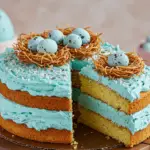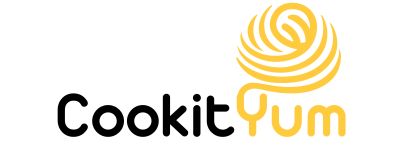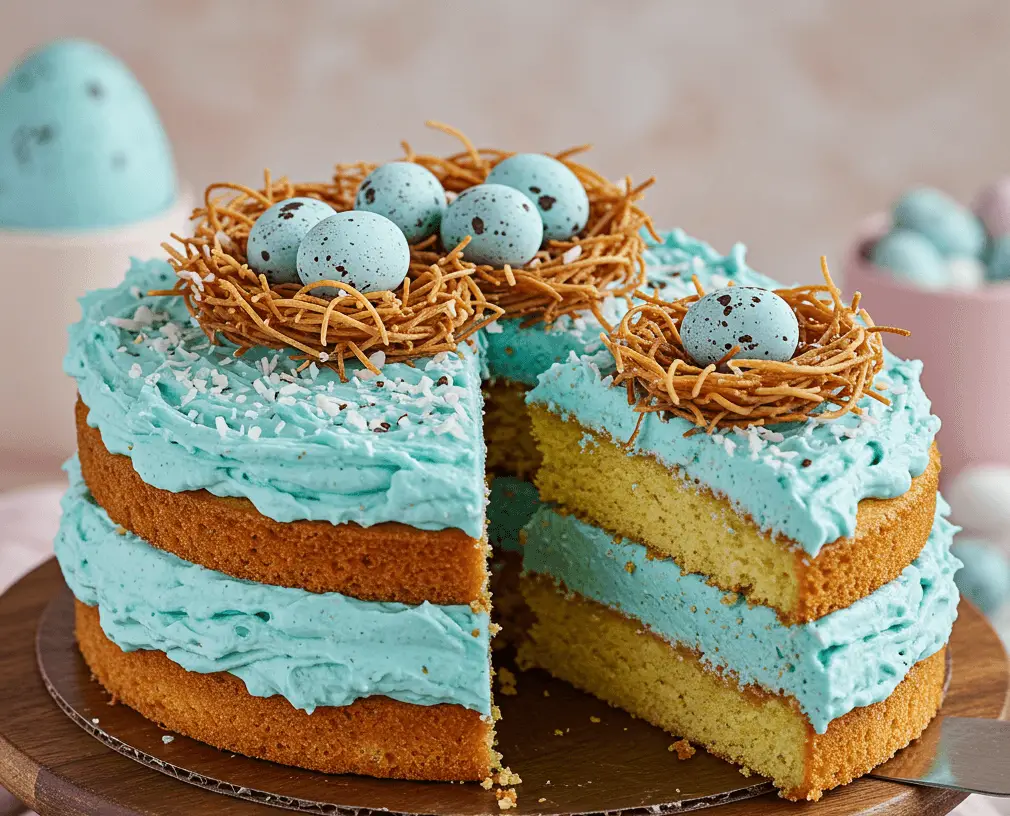One such delightful treat is the Easter Egg Cake—a festive, beautifully decorated cake shaped like an Easter egg. Whether you’re baking it for a family gathering, an Easter brunch, or simply for fun, this cake is sure to steal the spotlight. In this guide, we’ll walk you through everything you need to know about making an Easter Egg Cake, from its origins to a step-by-step recipe and creative decoration ideas.
The Origin and Significance of Easter Eggs
Easter eggs have been a part of the holiday tradition for centuries. But have you ever wondered why eggs are so closely linked to Easter?
-
Symbolism: Eggs represent new beginnings and rebirth, making them a fitting symbol for Easter, which celebrates resurrection and renewal.
-
Historical Traditions: In early Christian communities, eggs were forbidden during Lent. As a result, people would save them and celebrate Easter by decorating and eating them.
-
Evolution of Easter Treats: Over time, eggs were not just boiled and dyed but also crafted into chocolate and incorporated into desserts, eventually leading to themed cakes like the Easter Egg Cake.
This transformation of Easter eggs into edible delights inspired the creation of cakes that resemble decorated eggs—bringing both beauty and deliciousness to the holiday table.
What Is an Easter Egg Cake?
An Easter Egg Cake is a visually stunning dessert shaped like an Easter egg, often decorated with pastel colors, edible decorations, and intricate patterns.
Key Features:
-
Egg-Shaped Design: The cake is cut and carved to resemble a large Easter egg.
-
Vibrant Decorations: Icing, fondant, or chocolate coatings with colorful sprinkles and patterns.
-
Flavor Variety: Chocolate, vanilla, lemon, or even fruit-filled options.
Many home bakers and professional pastry chefs love creating these cakes because they are not only delicious but also make for a fantastic Easter table centerpiece.
Essential Ingredients for an Easter Egg Cake
Before diving into the baking process, let’s gather the essential ingredients.
For the Cake Base:
-
2 ½ cups all-purpose flour
-
1 ½ cups granulated sugar
-
1 cup unsalted butter (softened)
-
4 large eggs
-
1 cup whole milk
-
1 tbsp vanilla extract
-
2 tsp baking powder
-
½ tsp salt
For the Frosting and Decorations:
-
2 cups buttercream or cream cheese frosting
-
Food coloring (pastel shades)
-
Sprinkles, edible glitter, or candy pearls
-
Fondant (optional)
Want to add an extra twist? Try incorporating chocolate chips, coconut flakes, or crushed nuts into the batter for added texture and flavor.
Step-by-Step Guide to Making an Easter Egg Cake
Now that we have all the ingredients ready, let’s start baking!
Baking the Cake Base
-
Preheat oven to 350°F (175°C).
-
Grease and flour a rectangular or oval baking pan.
-
In a large bowl, cream butter and sugar together until light and fluffy.
-
Add eggs one at a time, beating well after each addition.
-
Mix in vanilla extract.
-
In another bowl, whisk together flour, baking powder, and salt.
-
Gradually add dry ingredients to wet ingredients, alternating with milk.
-
Pour batter into the prepared pan and bake for 30-35 minutes or until a toothpick inserted in the center comes out clean.
-
Let the cake cool completely before shaping and decorating.
Shaping the Cake into an Egg
Once the cake has cooled:
-
Carve the cake into an egg shape using a sharp knife.
-
Use a template or freehand draw an egg outline before cutting.
-
Trim the edges to create a smooth, rounded shape.
Frosting and Decorating
-
Apply a crumb coat by spreading a thin layer of frosting to trap crumbs.
-
Chill the cake for 15 minutes before adding the final frosting layer.
-
Use piping bags to add decorative swirls, dots, or stripes.
-
Top with sprinkles, fondant flowers, or edible pearls for extra flair.
Adding the Final Touches
Now that the base frosting is applied, it’s time to add some decorative magic!
-
Use Edible Colors: Mix pastel food colors (pink, blue, yellow, green) into different portions of buttercream or fondant to create a vibrant Easter theme.
-
Pipe Beautiful Designs: Use a piping bag with different nozzles to create floral patterns, zigzags, or polka dots.
-
Sprinkle Some Fun: Add edible glitter, pearlized sprinkles, or chocolate shavings for a sparkling effect.
-
Chocolate Easter Egg Toppers: Decorate with mini chocolate eggs, jelly beans, or even hand-painted fondant eggs.
Presentation matters! Serve the cake on a beautiful Easter-themed platter for a truly festive centerpiece.
Alternative Variations of Easter Egg Cake
If you’re looking for a unique twist on the classic Easter Egg Cake, try these variations:
Mini Easter Egg Cakes
-
Instead of making one large cake, bake cupcakes or mini cakes and shape them into small egg designs.
-
Great for kids’ parties or individual servings at Easter gatherings.
No-Bake Easter Egg Cake
-
Use crushed biscuits, melted chocolate, and condensed milk to create a no-bake cake.
-
Shape into an egg and coat with chocolate glaze for a simple yet delicious alternative.
Healthy & Vegan Easter Egg Cake
-
Swap regular flour for almond or oat flour and use coconut sugar for a healthier version.
-
Replace dairy and eggs with plant-based alternatives like almond milk and flaxseed eggs.
Easter Egg Cake Decoration Ideas
Want to get extra creative with your cake? Here are some stunning decoration ideas:
Using Fondant for a Smooth Finish
-
Roll out pastel-colored fondant and wrap it around the cake for a polished look.
-
Use cookie cutters to create fondant flower or bunny shapes.
DIY Chocolate Easter Eggs as Toppings
-
Melt white or milk chocolate and pour into egg-shaped molds.
-
Let them set, then place them atop the cake for an eye-catching decoration.
Pastel-Themed Designs
-
Stick to soft pastel colors for a classic Easter feel.
-
Create patterns like polka dots, swirls, or basket weaves using colored frosting.
Storing and Preserving Easter Egg Cake
Want to make your cake ahead of time or store leftovers? Here’s how:
Short-Term Storage:
-
Keep the cake covered at room temperature for up to 24 hours.
-
Use a cake dome or airtight container to prevent drying out.
Refrigerating the Cake:
-
If storing for longer, place the cake in the fridge in an airtight container.
-
Let it sit at room temperature for 30 minutes before serving to soften.
Freezing the Cake:
-
Wrap the unfrosted cake in plastic wrap and freeze for up to 3 months.
-
Thaw overnight in the fridge before decorating and serving.
Fun Activities Around Easter Egg Cakes
Making an Easter Egg Cake isn’t just about baking—it’s a fun-filled experience!
Family Cake Decorating Contest
-
Gather the family and have everyone decorate their own mini Easter Egg Cake.
-
Vote for the best design and award a fun Easter-themed prize.
Kids’ Easter Cake Decorating Station
-
Set up a table with different frostings, sprinkles, and toppings for kids to unleash their creativity.
Pairing Easter Egg Cake with Other Treats
-
Serve alongside Easter cookies, chocolate bunnies, and hot cocoa for a complete holiday dessert spread.
Conclusion
The Easter Egg Cake is more than just a dessert—it’s a delightful, eye-catching masterpiece that adds joy to any Easter celebration. From its rich symbolism to the fun of baking and decorating, this cake is a must-have for your holiday table. Whether you go for a classic vanilla sponge, a rich chocolate base, or a no-bake version, the possibilities are endless.
So why not gather your loved ones, put on your aprons, and create a festive Easter Egg Cake that’s as fun to make as it is to eat?
FAQs
Can I make an Easter Egg Cake without an egg-shaped pan?
Yes! You can bake a rectangular cake and carve it into an egg shape using a knife.
How do I make my cake extra moist?
Use buttermilk instead of regular milk and add a tablespoon of vegetable oil for added moisture.
Can I make this cake ahead of time?
Absolutely! Bake the cake a day in advance and store it in an airtight container before frosting.
What’s the best way to transport an Easter Egg Cake?
Use a sturdy cake board and box, and secure it with non-slip padding inside your container.
What flavors work best for an Easter Egg Cake?
Classic flavors like vanilla, chocolate, and lemon are always great choices, but you can experiment with coconut, carrot cake, or even raspberry for a unique twist!
Print
Easter Egg Cake
- Total Time: 55 minutes
- Yield: 12 servings 1x
Description
Looking for a fun and festive dessert for Easter? This Easter Egg Cake is a delightful treat, shaped like a beautifully decorated Easter egg. With soft, moist cake layers and colorful frosting, this cake will be the highlight of your Easter celebration.
Ingredients
For the Cake:
2 ½ cups all-purpose flour
1 ½ cups granulated sugar
1 cup unsalted butter (softened)
4 large eggs
1 cup whole milk
1 tbsp vanilla extract
2 tsp baking powder
½ tsp salt
For the Frosting:
2 cups buttercream or cream cheese frosting
2 cups powdered sugar
1 tbsp heavy cream or milk (if needed for consistency)
1 tsp vanilla extract
Food coloring (pastel shades: pink, yellow, blue, green)
For Decoration:
Sprinkles, edible glitter, or candy pearls
Mini chocolate eggs or fondant decorations
Piping bags for designs
Instructions
Step 1: Baking the Cake
Preheat oven to 350°F (175°C) and grease a rectangular or oval cake pan.
In a bowl, whisk together flour, baking powder, and salt.
In another large bowl, cream the butter and sugar until light and fluffy.
Add eggs one at a time, beating after each addition. Mix in vanilla extract.
Gradually add dry ingredients, alternating with milk, and mix until smooth.
Pour the batter into the prepared pan and bake for 30-35 minutes, or until a toothpick inserted in the center comes out clean.
Let the cake cool completely before shaping.
Step 2: Shaping the Cake
Once the cake is cool, use a knife to carve the cake into an egg shape.
Trim the edges smoothly to create a rounded oval.
Brush off excess crumbs before frosting.
Step 3: Frosting the Cake
Apply a crumb coat by spreading a thin layer of frosting over the cake. Chill for 15 minutes.
Add a second layer of frosting and smooth it out with a spatula.
Divide frosting into small bowls and tint with food coloring.
Step 4: Decorating the Cake
Use a piping bag to create colorful swirls, zigzags, or floral designs.
Add sprinkles, edible glitter, and mini chocolate eggs for a festive look.
Let the cake set for 10 minutes before serving.
Notes
Use a template: Draw an egg shape on parchment paper and use it as a guide for cutting.
Chill before carving: A slightly chilled cake is easier to cut without crumbling.
Try different flavors: Swap vanilla for chocolate, lemon, or funfetti for a unique twist.
Make it ahead: Bake the cake a day before and frost it on the day of serving.
Experiment with decorations: Use fondant, coconut flakes, or melted chocolate for different textures.
- Prep Time: 20 minutes
- Cook Time: 35 minutes

